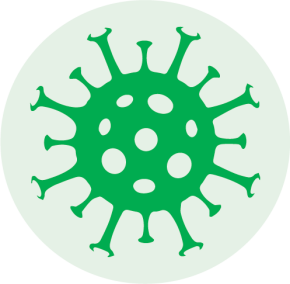

EDCTP portfolio: Emerging diseases
index


The STREESCO project aims to develop surveillance activities to support rapid identification and response to COVID-19 cases in Benin and Burkina Faso.
Strengthened COVID-19 surveillance in West Africa

Rapid identification of cases is essential to support COVID-19 control responses, such as isolation and contact tracing to break chains of transmission. However, in low-resource settings, limited systems exist for timely detection of new infections.
In addition, a lack of data on COVID-19 infections makes it difficult to determine patterns of spread of infection, an obstacle to effective control measures.
The challenge

The STREESCO project aims to build capacity to detect COVID-19 infections in two low-resource settings, Benin and Burkina Faso, to provide health authorities with the data needed to launch timely responses and control activities.
In Benin, the project will establish active epidemiological surveillance at three key hospitals – two in cities on the border of a health cordon set up in the country and one in a city well outside the cordon. At front-line health facilities, patients will be screened for COVID-19 symptoms and samples sent to central laboratories for analysis and confirmation of infections. Contacts will be traced and potential routes of transmission explored. Risk factors associated with infection of healthcare workers will also be explored, and a new COVID-19 information system will be introduced.
Over the longer term, it is important that surveillance systems exist that can detect surges in cases and the risk of new outbreaks. In Benin, health workers involved in detection will provide a regular epidemiological bulletin, which will be shared with health authorities. In Burkina Faso, a community-based approach will be introduced in rural areas, following a cohort of 200 households and building on a national system for surveillance of influenza-like syndromes.
Complementing this work, a health anthropologist will be embedded in the project and carry out research on public perceptions of COVID-19 and of control measures.
All the surveillance data collected will also be analysed in collaboration with European partners to give a clearer picture of the distribution of disease in the two countries and the dynamics of its spread.
The project

The STREESCO project will provide data to guide timely responses to COVID-19 in key areas of Benin and Burkina Faso. In Benin, surveillance activities will reveal whether COVID-19 has spread to new areas. The project will also generate a clearer picture of the dynamics of the spread of COVID-19 in the two countries, and introduce ways of working that could be introduced more widely across the two countries. The surveillance systems in health facilities will capture, filter and analyze signals in real time, providing early warnings about the resurgence or emergence of viral respiratory infections.
Impact


“
test the safety and efficacy of this new formulation in young children
”
Bringing antiretroviral drugs to children

The CHAPAS trials have ensured that many more children with HIV have benefited
from life-saving antiretrovirals.
EDCTP portfolio: HIV & HIV-associated infections
The challenge
Rapid identification of cases is essential to support COVID-19 control responses, such as isolation and contact tracing to break chains of transmission. However, in low-resource settings, limited systems exist for timely detection of new infections.
In addition, a lack of data on COVID-19 infections makes it difficult to determine patterns of spread of infection, an obstacle to effective control measures.

The STREESCO project aims to build capacity to detect COVID-19 infections in two low-resource settings, Benin and Burkina Faso, to provide health authorities with the data needed to launch timely responses and control activities.
In Benin, the project will establish active epidemiological surveillance at three key hospitals – two in cities on the border of a health cordon set up in the country and one in a city well outside the cordon. At front-line health facilities, patients will be screened for COVID-19 symptoms and samples sent to central laboratories for analysis and confirmation of infections. Contacts will be traced and potential routes of transmission explored. Risk factors associated with infection of healthcare workers will also be explored, and a new COVID-19 information system will be introduced.
Over the longer term, it is important that surveillance systems exist that can detect surges in cases and the risk of new outbreaks. In Benin, health workers involved in detection will provide a regular epidemiological bulletin, which will be shared with health authorities. In Burkina Faso, a community-based approach will be introduced in rural areas, following a cohort of 200 households and building on a national system for surveillance of influenza-like syndromes.
Complementing this work, a health anthropologist will be embedded in the project and carry out research on public perceptions of COVID-19 and of control measures.
All the surveillance data collected will also be analysed in collaboration with European partners to give a clearer picture of the distribution of disease in the two countries and the dynamics of its spread.
The project
The later CHAPAS-3 trial compared the efficacy and safety of three fixed-dose combinations including two without stavudine (found to have some long-term side effects in adults, leading to a recommendation that its use be discontinued in children). The trial the first of its kind in Africa studied nearly 500 children at four sites in two African countries.
The STREESCO project will provide data to guide timely responses to COVID-19 in key areas of Benin and Burkina Faso. In Benin, surveillance activities will reveal whether COVID-19 has spread to new areas. The project will also generate a clearer picture of the dynamics of the spread of COVID-19 in the two countries, and introduce ways of working that could be introduced more widely across the two countries. The surveillance systems in health facilities will capture, filter and analyze signals in real time, providing early warnings about the resurgence or emergence of viral respiratory infections.
ratios forfixed-dose combinations and on appropriatedosage according to weight.
The CHAPAS-3 trial confirmed the effectiveness of fixed-dose combinations, providing further impetus to the rollout of antiretrovirals to children. Its evidence on abacavir informed the WHO recommendation of abacavir-containing combinations for first-line therapy in children. Trial data have also been used to support applications for regulatory approval for new scored efavirenz tablets.
Impact
L’homme RF et al. Nevirapine, stavudine and lamivudine pharmacokinetics in African children on paediatric fixed-dose combination tablets. AIDS. 2008;22(5):557–65.
Mulenga V et al. Abacavir, zidovudine, or stavudine as paediatric tablets for African HIVinfected children (CHAPAS-3): an open-label, parallel-group, randomised controlled trial. Lancet Infect Dis. 2016;16(2):169–79.
WHO. Guidelines on the use of antiretroviral drugs for treating and preventing HIV infection: recommendations for a public health approach. 2010.
WHO. Consolidated guidelines on the use of antiretroviral drugs
for treating and preventing
HIV infection: Recommendations for a public health approach
(second edition). 2016
Projects: Children with HIV in Africa Pharmacokinetics and Adherence of Simple Antiretroviral Regimens (CHAPAS): CHAPAS-1 and -3
Project lead: Professor Chifumbe Chintu, University Teaching Hospital, Zambia (CHAPAS-1); Dr Veronica Mulenga, University Teaching Hospital, Zambia (CHAPAS-3)
Target population(s): Children with HIV
Sample size: 71 (CHAPAS-1); 480 (CHAPAS-3)
Countries involved: Ireland, the Netherlands, the UK, the USA, Zambia (CHAPAS-1); Uganda, Zambia (CHAPAS-3)
Project duration: 2005–2009 (CHAPAS-1); 2010 –2011 (CHAPAS-3)
EDCTP funding: €1.2M (CHAPAS-1); €4.6M (CHAPAS-3)
Total project funding: €1.2M (CHAPAS-1); €5.0M